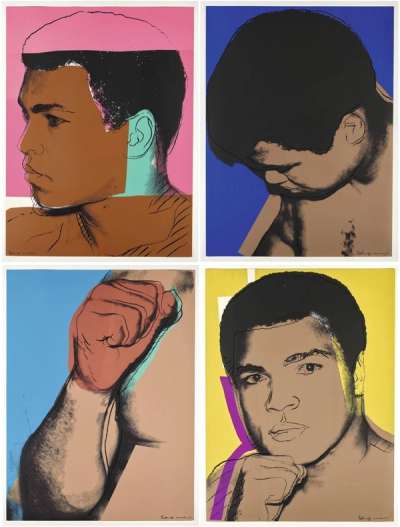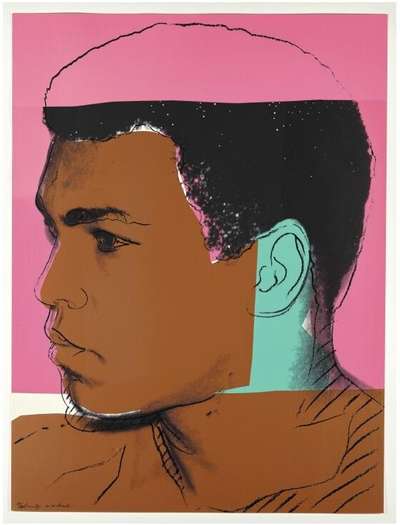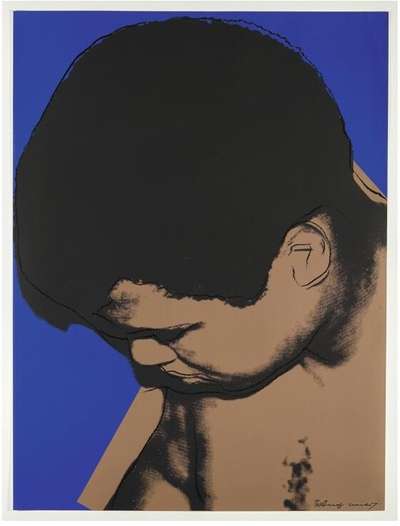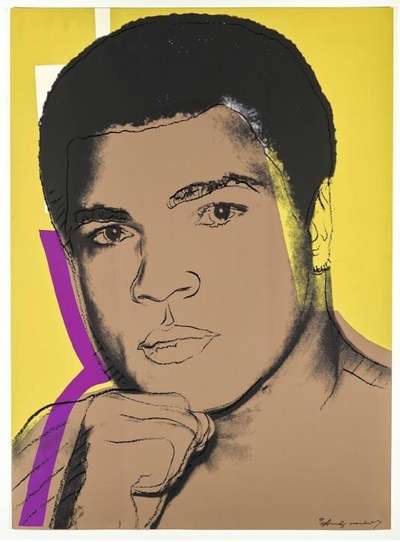
Muhammad Ali (F. & S. II.181)

Muhammad Ali (F. & S. II.181)
Signed Print
Andy Warhol
£26,000-£40,000
$50,000-$80,000 Value Indicator
$45,000-$70,000 Value Indicator
¥240,000-¥370,000 Value Indicator
€30,000-€50,000 Value Indicator
$250,000-$390,000 Value Indicator
¥4,980,000-¥7,660,000 Value Indicator
$35,000-$50,000 Value Indicator
AAGR (5 years) This estimate blends recent public auction records with our own private sale data and network demand.
There aren't enough data points on this work for a comprehensive result. Please speak to a specialist by making an enquiry.
Medium: Screenprint
Edition size: 150
Year: 1978
Size: H 102cm x W 76cm
Signed: Yes
Format: Signed Print
TradingFloor
Track this artwork in realtime
Watch artwork, manage valuations, track your portfolio and return against your collection
Track auction value trend
Auction Results
| Auction Date | Auction House | Location | Hammer Price | Return to Seller | Buyer Paid |
|---|---|---|---|---|---|
| October 2022 | Christie's New York | United States | |||
| March 2022 | Sotheby's Online | United Kingdom | |||
| October 2020 | Bonhams New York | United States | |||
| October 2020 | Bonhams New Bond Street | United Kingdom | |||
| April 2003 | Bonhams San Francisco | United States |
Meaning & Analysis
In Muhammad Ali (F. & S. II.181), Andy Warhol represents the fist and chest of the boxer, orator, and activist in screen print. The artist took polaroid photographs of Muhammad Ali in 1977. From these photographs, he created this screen print by cropping, highlighting, outlining, and adding pops of colour for emphasis.
Here, Warhol has emphasised the curled fist of the fighter by colouring it a reddish brown and outlining the thumb line with aqua. The outlines give the fist a sense of motion, as if it were poised to strike at any moment. This draws the viewer's attention to the famous hand as it curls against his muscular chest.
This particular print of Muhammed Ali comes from a larger series of images of Ali, entitled Muhammad Ali. Warhol first began to represent athletes with this series in the 1970s when Richard Weisman commissioned a sports series. The four images of Ali were accompanied by images of Pelé, Jack Nicklaus, and others. Although Warhol himself was not a sports fan, these images remain in line with his overarching obsession with celebrity and fame. This image of Ali’s fist particularly evokes this idea as it does not show the boxer's face but remains instantly recognisable as him.



